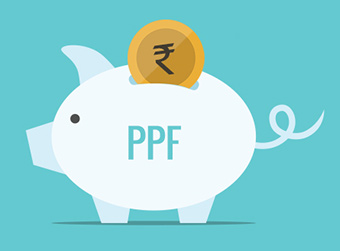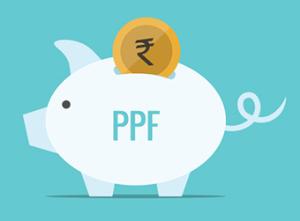Things You Must Know About Public Provident Fund Scheme
Blog Title
1388 |
Public Provident Fund scheme is a savings scheme that was introduced in 1968 by the National Savings Institute of the Ministry of Finance, Government of Bharat to encourage the habit of savings and investment among salaried individuals. At present, apart from being one of the best options to increase savings, it has evolved into a useful tool to save tax as well. Providing a high rate of interest at 7.6% on an average (it was 7.9% for January 2020 to March 2020), it is one of the most affordable and safest investment tools available as it is backed directly by the government of Bharat.
Under the PPF scheme, you can open an account in any nearest government-backed bank or a post office in your area. You just have to fill a form and provide relevant documents, and you can start saving right away. To understand more about the PPF scheme and how it can benefit you, go through the information given below.
Features of the Public Provident Fund Scheme
- Maturity and tenure: PPF or public provident scheme has a minimum lock-in period of 15 years. In other words, every PPF scheme reaches its maturity after 15 years. After maturity, you have the option to extend the scheme in blocks of 5 years. But do note that the lock-in period starts from the end of the financial year in which the scheme has been started. For example: If you have started the scheme from 5th February 2020, your lock-in period of 15 years will start from 31st March 2020, and the scheme will mature after 15 years starting from the date 31st March 2020.
- Contributions: You can make contributions to your PPF account at a maximum of 12 times a year. The minimum amount of contribution is Rs 500 per year, and the maximum amount you can contribute in a single financial year is INR 1.5 lakhs. If there is a deposit of more than 1.5 lakhs in a single year, the excess amount is deemed irregular, and no tax deduction and interest is given on that amount.
- The rate of Interest: The rate of interest is fixed every quarter by the government, but is subject to change. For this quarter, however, the rate of interest has been fixed at 7.6%, which the government may change in the next quarter.
- Eligibility: If you are an Indian citizen, you can easily open a PPF account anytime you want. Non-Resident Indians (NRIs) are not allowed to open a new Public Provident Fund account. However, if an NRI has opened an account before 2003, he/she is allowed to contribute to the existing account until its maturity. No joint accounts can be opened, but a minor is allowed to open a PPF account with a guardian.
- Debt/Liability: Irrespective of your contributions to your PPF account, you are not bound/obligated to use your PPF account balance to take pay off a liability or a debt. Even a court order cannot sanction that debt is paid from the balance of a PPF account.
- Discounted PPF accounts: If you fail to pay the minimum sum of Rs 500 a year, your account is discontinued, and you lose the option to withdraw money from your PPF account. The interest, however, still accrues. You can regularize your account by paying a penalty of Rs 50 per year for the number of years your account was inactive.
Public Provident Fund Benefits
- Partial Premature Withdrawal: If you think that a PPF scheme is suitable for you as it has a lock-in period of a long 15 years, don’t worry. You can withdraw your money long before the maturity. Under the PPF scheme, you are allowed to make premature withdrawals not exceeding 50% of the closing balance at the end of the fourth year, or 50% of the closing balance of the preceding year, whichever is less.
- Loan facility on the PPF account: You can take loans on your PPF account starting from the third year and ending in the sixth year. A maximum of 25% of the balance of the second year, which immediately precedes the year of applying for a loan, is allowed under the PPF scheme.
- Tax benefits: One of the most significant public provident fund scheme benefits is the capability of the scheme to save a considerable amount of tax. The money deposited in the PPF account is tax-deductible up to a limit under section 80C of the income-tax act. Apart from this, the amount withdrawn before the maturity date and the interest earned is exempt from tax. PPF accounts are also exempted from Wealth Tax.
- Nomination/Transfer: A person can nominate a minor for his/her account acting as a guardian. The PPF account can also be transferred from a Post Office to any government-backed bank and vice versa. The account can also be transferred from one branch to another within a bank, or from one bank to another.
How can you open a PPF account?
You can visit a post office or a government-backed bank to open an account under the PPF scheme. The documentation and procedure to open a PPF account are as follows:
- KYC (know your customer) documents: These documents include identity proofs, Address proof, and signature proof. Passport, Pan Card, Aadhar card, Bank statements, Voter ID, Utility bills, etc. are accepted.
- Passport size photographs (minimum of 2 photos)
- You are required to fill an account opening form, with a beneficiary form (only if you wish to add a beneficiary)
Apart from the offline method mentioned above, a much simpler and fast way is to open the account for public provident funds online. You can visit the bank’s website or can use a financial company’s services to start with the public provident fund online, without having to visit the bank’s or the post office branch.
To sum up, investing in a PPF scheme is a great way to adopt a habit of timely savings and build your wealth in the process. It is a great way to save tax on your investment and avoid the risk of loss in the long run. For the salaried individuals, it should be a scheme with the highest priority, as long as their financial plan is concerned.












